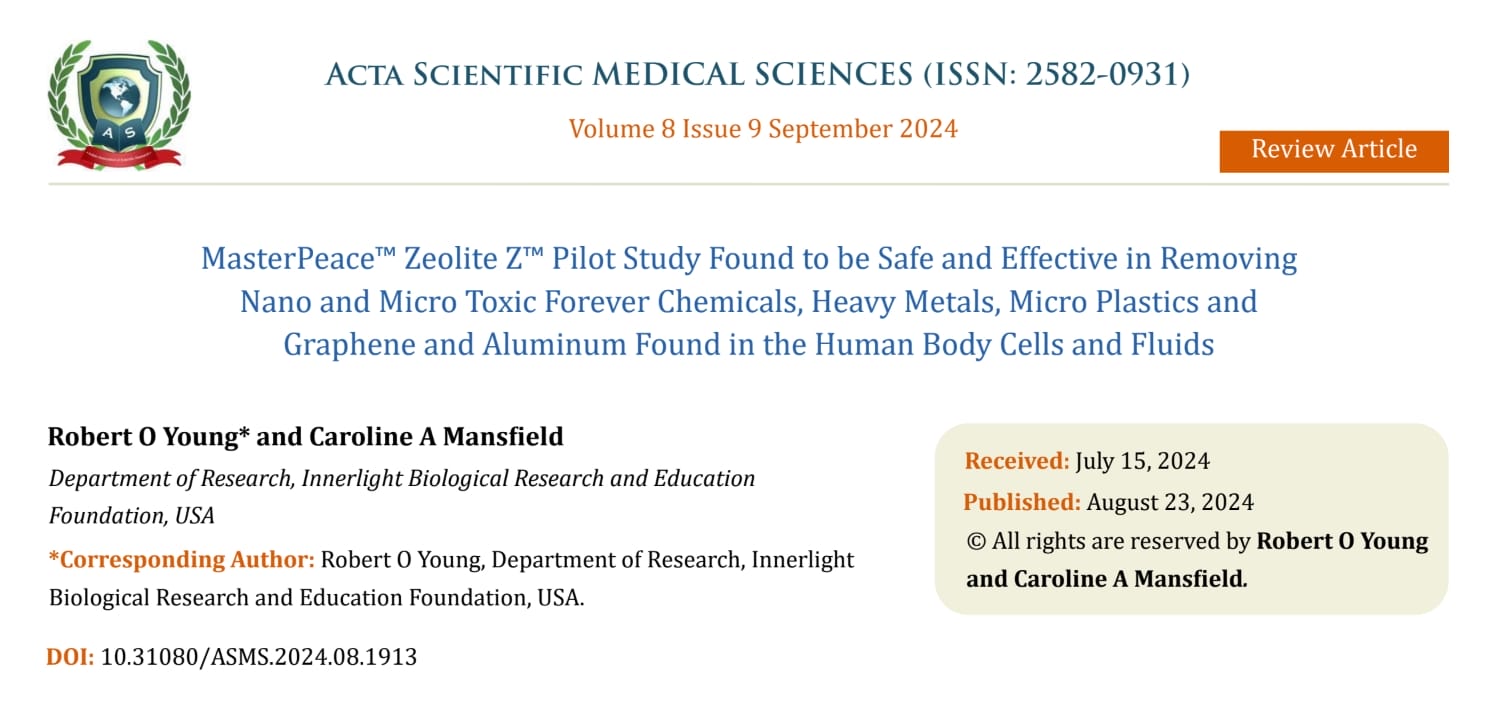Are YOU Following a CON-VIT-DIE-IT or a pH Miracle Alkaline LIVE-IT Lifestyle?
An Acidic Die-it and Lifestyle Is More Deadly Than Smoking and the Cause of Heart Attacks, Diabetes, Cancer & the any So-called Infectious Disease like HIV or Coronavirus!

A new landmark study published in the Lancet found that, poor or acidic diet is responsible for more than 1 in 5 deaths globally, making it more deadly than tobacco.

Consuming both low amounts of healthy alkaline foods and high amounts of unhealthy acidic foods are key to these findings.
These unhealthy highly acidic foods include, beef, chicken, pork, duck, turkey, fish, dairy, eggs, vinegar, sugar, alcohol, vinegar, carbonated drinks, energy drinks, coffee, black tea, just to name a few.

The healthy alkaline foods include, low sugar fruit like tomato, avocado, grapefruit, cucumber, peppers of all colors, lemon and lime and vegetables, such as broccoli, spinach, arugula, celery, cabbage, cauliflower, brussels sprouts, ginger, turmeric just to name a few.

What you put on your plate can play a serious role in how likely you are to die before your time: According, to the study, a poor or acidic diet is actually the leading cause of death worldwide, contributing to more of them than conventional risk factors like tobacco use.


In the study, researchers analyzed food consumption habits of adults ages 25 and older from 1990 to 2017 in 195 countries and compared how their diet affected their chances of premature death.

They found that in 2018, 11 million deaths—or 35 percent—worldwide were caused by a poor acidic diet. More specifically? Of these deaths, 9.5 million were due to cardiovascular disease, over 900,000 to diet-related cancers, over 330,000 to diabetes, and over 136,000 to kidney diseases. NOW that is a REAL PANdemic!

On the other hand, more commonly known risk factors like high blood pressure and tobacco use was linked to 10.4 million and 8 million deaths, respectively. Researchers also found that a poor acidic diet is linked to more years lived with disability, too.
According to Dr. Robert O Young at the pH Miracle Research Center, USA, “an acidic diet is a Worldwide equal opportunity killer and the number 1 cause of ALL sickness and disease!”

The following are the references to this very important 27 year Lancet published study validating the work of Dr. Robert O Young, who suggested in 1984 that there is only one sickness, one disease and one treatment. To learn more about the one sickness, one disease and one treatment read, The pH Miracle revised and updated book and Sick and Tired, Reclaim YOUR Inner Terrain. You can order these two books at: www.phmiracleproducts.com

This one sickness and one disease was described by Dr. Young as the over-acidification of the blood and then interstitial fluids of the Interstitium due to an inverted way of living, eating, drinking, breathing, thinking, feeling and believing.

Dr. Young has suggested that there was only one treatment in order to restore the alkaline design of the body fluids by using an alkaline lifestyle and diet as described in his research, published papers and books, such as, A Nutritional Approach to the Prevention and Treatment of Any Cancerous Condition, A Finger on the Magic of Life, The pH Miracle, The pH Miracle revised and update, The pH Miracle for Weight Loss, The pH Miracle For Diabetes, The pH Miracle for the Heart and The pH Miracle for Cancer.

For those looking for more understanding about viruses, vaccines and the Coronavirus read the following books and publications:
2) THE POSSIBLE CAUSE OF POLIO, POST-POLIO, CNS, PVIPD, LEGIONNAIRES, AIDS and the CANCER EPIDEMIC – MASS ACIDIC CHEMICAL POISONING? Oct 19, 2016

3) Chlorine Dioxide (CL02) As a Non-Toxic Antimicrobial Agent for Virus, Bacteria and Yeast (Candida Albicans)

You can find Dr. Young’s published research at: www.drrobertyoung.com or his books at: www.phmiracleproducts.com

References
1. Health effects of dietary risks in 195 countries, 1990–2017: a systematic analysis for the Global Burden of Disease Study 2017
GBD 2017 Diet Collaborators
Open AccessPublished:April 03, 2019DOI:https://doi.org/10.1016/S0140-6736(19)30041-8
2. Willett WC Stampfer MJ
Current evidence on healthy eating.
Annu Rev Public Health. 2013; 34: 77-95
3. Norat T Chan D Lau R Aune D Vieira R Corpet D
The associations between food, nutrition and physical activity and the risk of colorectal cancer.
http://www.wcrf.org/sites/default/files/SLR_colorectal_cancer_2010.pdf
Date: Oct, 2010
Date accessed: December 12, 2016
4. World Cancer Research Fund/American Institute for Cancer Research
Diet, nutrition, physical activity and cancer: a global perspective. Continuous Update Project Expert Report.
https://www.wcrf.org/dietandcancer
Date: 2018
Date accessed: February 19, 2019
5. Micha R Shulkin ML Peñalvo JL et al.
Etiologic effects and optimal intakes of foods and nutrients for risk of cardiovascular diseases and diabetes: systematic reviews and meta-analyses from the Nutrition and Chronic Diseases Expert Group (NutriCoDE).
PLoS One. 2017; 12: e0175149
6. Micha R Kalantarian S Wirojratana P et al.
Estimating the global and regional burden of suboptimal nutrition on chronic disease: methods and inputs to the analysis.
Eur J Clin Nutr. 2012; 66: 119-129
7. Colditz GA
Overview of the epidemiology methods and applications: strengths and limitations of observational study designs.
Crit Rev Food Sci Nutr. 2010; 50: 10-12
8. Nishida C Uauy R Kumanyika S Shetty P
The joint WHO/FAO expert consultation on diet, nutrition and the prevention of chronic diseases: process, product and policy implications.
Public Health Nutr. 2004; 7: 245-250
9. Lloyd-Jones DM Hong Y Labarthe D et al.
Defining and setting national goals for cardiovascular health promotion and disease reduction: the American Heart Association’s strategic Impact Goal through 2020 and beyond.
Circulation. 2010; 121: 586-613
10. McGuire S
U.S. Department of Agriculture and U.S. Department of Health and Human Services, Dietary Guidelines for Americans, 2010.
7th Edition. U.S. Government Printing Office, Washington, DC; January 2011Adv Nutr. 2011; 2: 293-294
11. Lim SS Vos T Flaxman AD et al.
A comparative risk assessment of burden of disease and injury attributable to 67 risk factors and risk factor clusters in 21 regions, 1990–2010: a systematic analysis for the Global Burden of Disease Study 2010.
Lancet. 2012; 380: 2224-2260
12. Forouzanfar MH Alexander L et al.GBD 2013 Risk Factors Collaborators
Global, regional, and national comparative risk assessment of 79 behavioural, environmental and occupational, and metabolic risks or clusters of risks in 188 countries, 1990–2013: a systematic analysis for the Global Burden of Disease Study 2013.
Lancet. 2015; 386: 2287-2323
13. GBD 2015 Risk Factors Collaborators
Global, regional, and national comparative risk assessment of 79 behavioural, environmental and occupational, and metabolic risks or clusters of risks, 1990–2015: a systematic analysis for the Global Burden of Disease Study 2015.
Lancet. 2016; 388: 1659-1724
14. GBD 2016 Risk Factors Collaborators
Global, regional, and national comparative risk assessment of 84 behavioural, environmental and occupational, and metabolic risks or clusters of risks, 1990–2016: a systematic analysis for the Global Burden of Disease Study 2016.
Lancet. 2017; 390: 1345-1422
15. Mozaffarian D Fahimi S Singh GM et al.
Global sodium consumption and death from cardiovascular causes.
N Engl J Med. 2014; 371: 624-634
16. Singh GM Micha R Khatibzadeh S et al.
Estimated global, regional, and national disease burdens related to sugar-sweetened beverage consumption in 2010.
Circulation. 2015; 132: 639-666
17. Singh GM Micha R Khatibzadeh S et al.
Global, regional, and national consumption of sugar-sweetened beverages, fruit juices, and milk: a systematic assessment of beverage intake in 187 countries.
PLoS One. 2015; 10: e0124845
18. Micha R Khatibzadeh S Shi P et al.
Global, regional and national consumption of major food groups in 1990 and 2010: a systematic analysis including 266 country-specific nutrition surveys worldwide.
BMJ Open. 2015; 5: e008705
19. Micha R Khatibzadeh S Shi P et al.
Global, regional, and national consumption levels of dietary fats and oils in 1990 and 2010: a systematic analysis including 266 country-specific nutrition surveys.
BMJ. 2014; 348: g2272
20. Wang Q Afshin A Yakoob MY et al.
Impact of nonoptimal intakes of saturated, polyunsaturated, and trans fat on global burdens of coronary heart disease.
J Am Heart Assoc. 2016; (published online Jan 20.)
DOI:10.1161/JAHA.115.002891
21. Schmidhuber J Sur P Fay K et al.
The Global Nutrient Database: availability of macronutrients and micronutrients in 195 countries from 1980 to 2013.
Lancet Planet Health. 2018; 2: e353-e368
22. Gakidou E Afshin A Abajobir AA et al.
Global, regional, and national comparative risk assessment of 84 behavioural, environmental and occupational, and metabolic risks or clusters of risks, 1990–2016: a systematic analysis for the Global Burden of Disease Study 2016.
Lancet. 2017; 390: 1345-1422
23. Singh GM Danaei G Farzadfar F et al.
The age-specific quantitative effects of metabolic risk factors on cardiovascular diseases and diabetes: a pooled analysis.
PLoS One. 2013; 8: e65174
24. Mente A O’Donnell M Rangarajan S et al.
Associations of urinary sodium excretion with cardiovascular events in individuals with and without hypertension: a pooled analysis of data from four studies.
Lancet. 2016; 388: 465-475
25. Trinquart L Johns DM Galea S
Why do we think we know what we know? A metaknowledge analysis of the salt controversy.
Int J Epidemiol. 2016; 45: 251-260
26. GBD 2016 Causes of Death Collaborators
Global, regional, and national age-sex specific mortality for 264 causes of death, 1980–2016: a systematic analysis for the Global Burden of Disease Study 2016.
Lancet. 2017; 390: 1151-1210
27. Djalalinia S Saeedi Moghaddam S Moradi-Lakeh M et al.
Prevalence and years lived with disability of 310 diseases and injuries in Iran and its neighboring countries, 1990–2015: findings from Global Burden of Disease Study 2015.
Arch Iran Med. 2017; 20: 392-402
28. WHO
Global action plan for the prevention and control of noncommunicable diseases: 2013–2020.
http://apps.who.int/iris/bitstream/10665/94384/1/9789241506236_eng.pdf
Date: 2013
Date accessed: December 12, 2016
29. WHO
2008–2013 action plan for the global strategy for the prevention and control of noncommunicable diseases: prevent and control cardiovascular diseases, cancers, chronic respiratory diseases and diabetes.
World Health Organization, Geneva; 2009
30. Afshin A Penalvo J Del Gobbo L et al.
CVD prevention through policy: a review of mass media, food/menu labeling, taxation/subsidies, built environment, school procurement, worksite wellness, and marketing standards to improve diet.
Curr Cardiol Rep. 2015; 17: 98
31. Mozaffarian D Afshin A Benowitz NL et al.
Population approaches to improve diet, physical activity, and smoking habits: a scientific statement from the American Heart Association.
Circulation. 2012; 126: 1514-1563
32. WHO
Interventions on diet and physical activity: what works. Summary report.
World Health Organization, Geneva; 2009
33. Cobiac LJ Veerman L Vos T
The role of cost-effectiveness analysis in developing nutrition policy.
Annu Rev Nutr. 2013; 33: 373-393
34. Bibbins-Domingo K Chertow GM Coxson PG et al.
Projected effect of dietary salt reductions on future cardiovascular disease.
N Engl J Med. 2010; 362: 590-599
35. Smith-Spangler CM Juusola JL Enns EA Owens DK Garber AM
Population strategies to decrease sodium intake and the burden of cardiovascular disease: a cost-effectiveness analysis.
Ann Intern Med. 2010; 152: 481-487
36. Owen L Morgan A Fischer A Ellis S Hoy A Kelly MP
The cost-effectiveness of public health interventions.
J Public Health. 2012; 34: 37-45
37. Lachat C Otchere S Roberfroid D et al.
Diet and physical activity for the prevention of noncommunicable diseases in low- and middle-income countries: a systematic policy review.
PLoS Med. 2013; 10: e1001465
38. Downs SM Thow AM Leeder SR
The effectiveness of policies for reducing dietary trans fat: a systematic review of the evidence.
Bull World Health Organ. 2013; 91 (69H): 262
39. Anand SS Hawkes C de Souza RJ et al.
Food consumption and its impact on cardiovascular disease: importance of solutions focused on the globalized food system: a report from the workshop convened by the World Heart Federation.
J Am Coll Cardiol. 2015; 66: 1590-1614
40. Brown GW Yamey G Wamala S The handbook of global health policy. Wiley, Hoboken; 2014
41. Tilman D Clark M
Global diets link environmental sustainability and human health.
Nature. 2014; 515: 518-522
42. Auestad N Fulgoni VL
What current literature tells us about sustainable diets: emerging research linking dietary patterns, environmental sustainability, and economics.
Adv Nutr. 2015; 6: 19-36
43. Heller MC Keoleian GA Willett WC
Toward a life cycle-based, diet-level framework for food environmental impact and nutritional quality assessment: a critical review.
Environ Sci Technol. 2013; 47: 12632-12647
44. Sabaté J Soret S
Sustainability of plant-based diets: back to the future.
Am J Clin Nutr. 2014; 100: 476S-482S
45. Food and Agriculture Organization of the United Nations
Food consumption database.
http://www.fao.org/nutrition/assessment/food-consumption-database/en/
Date accessed: December 12, 2016
46. Hill RJ Davies PS
The validity of self-reported energy intake as determined using the doubly labelled water technique.
Br J Nutr. 2001; 85: 415-430
47. McLean RM
Measuring population sodium intake: a review of methods.
Nutrients. 2014; 6: 4651-4662
48. Illner A-K Freisling H Boeing H Huybrechts I Crispim SP Slimani N
Review and evaluation of innovative technologies for measuring diet in nutritional epidemiology.
Int J Epidemiol. 2012; 41: 1187-1203



